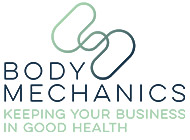The Value of People – working from the top down
The Challenge
Clients tell us that a major challenge to investment in and support of employee health and wellbeing is buy-in from The Board, who see it as an expenditure, rather than an investment with a ROI. However, in a recent article published by Zoe Wickens for Employee Benefits, she highlights that 83% of employers have seen a rise in wellbeing benefit requests. This shines a light on a disconnect between The Board and the rest of the workforce and an area which requires attention.
This obviously isn’t the case in every business, there are some very strong corporate advocates out there, Google being repeatedly held as the gold standard, but we find this view surprising, even now in 2023 and post-Covid, that health and wellbeing is seen as a secondary concern in achieving optimal business performance for some.
The Evidence
In a report published by CIPD in July 2023, they found the following key findings:
- There is often a significant mismatch between the skills and knowledge of Boards and those needed to understand the main people-related risks facing organisations
- The majority of UK Boards lack Directors with a background in HR and people development
- Boards overfocus on Finance, at the expense of people issues
- Ultimately, organisations fail to fully recognise the value-creation potential of their workforces and therefore their businesses overall
So how do we change the conversation? How do we improve corporate governance, getting support and investment from The Board? How do we make health and wellbeing a central focus to business management and performance?
CIPD has made the recommendation that at the very least, Boards should ‘be required to have formal processes for accessing professional HR expertise when discussing workforce matters’ and that this expertise should be ‘recent and relevant people experience’
The Plan of Attack
Our summary approach advocates:
1. Create a Board Position - put health and wellbeing at the centre of corporate governance
Have a ‘people professional’ lead the way with best business practices for the workforce today. Make them visible and give them a voice to ensure you lead from the top down. Having Health and Wellbeing Champions throughout the business is another way to strengthen your message and to show your commitment.
2. Data - let the statistics do the talking
Use your people data and provide analytics to demonstrate how business performance can be improved through investment and support. Give the data context with real and familiar business scenarios.
3. Poll Your People - get first hand feedback
Ask your people how their day-to-day work experience and their work/life balance could be improved and then poll them again - how do they think you are doing as a business in terms of health and wellbeing? Make this a regular activity. Stay present and keep relevant.
4. Make a Business Case - give the data and the feedback business context
Tell Senior Management how they can get the best from their workforce and what it means to them. Make health and wellbeing a tangible investment. Highlight how it can improve certain business areas, as well as overall engagement, productivity and profitability. Give employee case studies where relevant. Hold regular reviews.
Summary Conclusion
Wickens’ article states that Board perspectives are changing, with 71% of businesses having introduced a Head of Wellbeing or similar, to oversee their employees’ needs and to communicate effectively, increasing open discussions and engagement. A positive step.
Matt Russell, Chief Executive Officer at Zest, is also quoted as saying ‘Employers not investing in their benefits packages will struggle to keep pace as the wellbeing revolution continues to accelerate. They risk being left behind by competitors and could face a real struggle to attract and retain key talent if they don’t listen to the demands of the workforce’
In our own client base, we have seen a real drive to get corporate governance and employee wellbeing right. New roles are being created specifically within health and wellbeing and not just incorporated into existing roles. They acknowledge that the workplace has changed. Employees expect and demand a better balance between being seen as an employee and a person; they want balance. If businesses want to enjoy future success, they need to keep up and stay current. Get that right and you’ll have a loyal, happy and productive workforce.
Other Articles of Interest
From Third Parties
- https://workplacewellbeing.pro/news/c-suite-leaders-set-the-bar-for-employee-wellbeing/
- https://employeebenefits.co.uk/jagermeister-and-virgin-atlantic-among-uks-most-loved-workplaces-2023/
From Body Mechanics:
- https://bodymechanics.co.uk/thriving-at-work/
- https://bodymechanics.co.uk/who-should-oversee-health-and-wellbeing/
- https://bodymechanics.co.uk/blended-approach-to-coporate-wellbeing/
- https://bodymechanics.co.uk/business-trends-2023/
- https://bodymechanics.co.uk/employee-retention/
- https://bodymechanics.co.uk/corporate-health-and-wellbeing/

